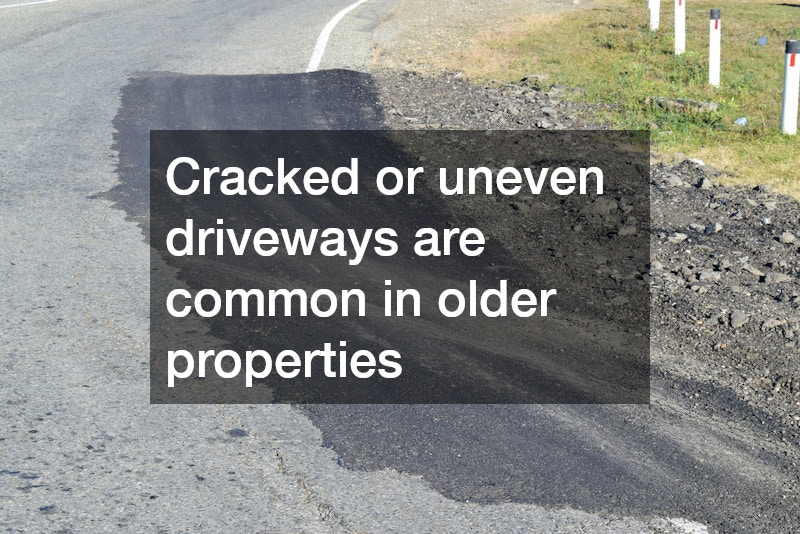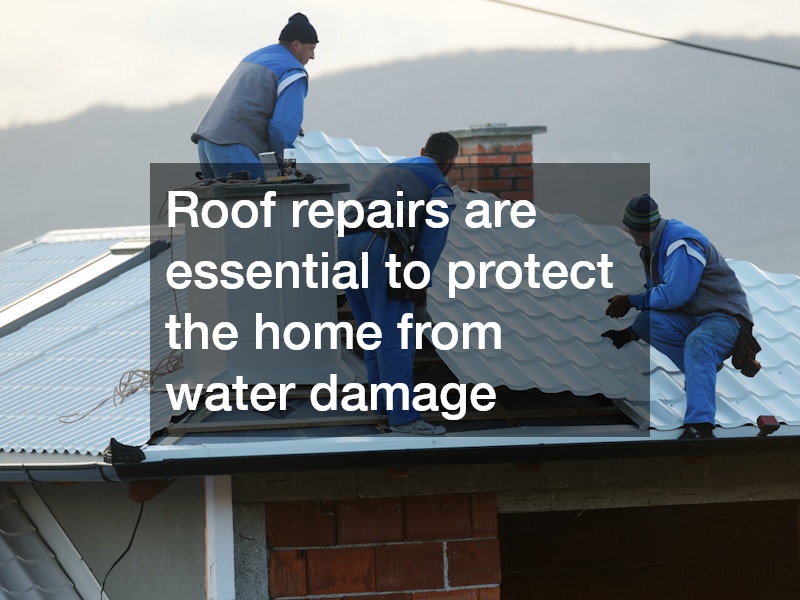

Fixer-uppers can be an exciting investment, offering the potential to create a dream home from a property with untapped potential. However, they often come with hidden costs that can quickly overwhelm even the most prepared buyers. From outdated plumbing to structural concerns, these issues may not always be visible during initial inspections. Identifying these challenges and understanding how to address them can save you time, stress, and money. This guide explores common hidden costs in fixer-uppers and provides practical tips for budgeting effectively.
1. Plumbing Problems Lurking Beneath the Surface
Older homes often come with hidden plumbing issues that can turn a dream fixer-upper into a financial headache if not addressed promptly. Aging plumbing systems may feature corroded pipes, outdated materials like galvanized steel or lead, or subpar DIY fixes by previous owners. Over time, these problems can lead to persistent leaks, reduced water pressure, or even catastrophic system failures that cause extensive water damage to floors, walls, and ceilings. The cost of repairing or replacing plumbing in such cases can be significant, particularly if the damage extends to other parts of the home. Tackling these problems early not only minimizes risks but also saves money in the long run.
Consider Pipe Lining for Cost-Effective Repairs
Pipe lining is a revolutionary method of addressing damaged pipes without the need for invasive excavation or complete replacement. It involves inserting a flexible liner coated with epoxy resin into the damaged pipe. Once in place, the liner is inflated and cured, creating a seamless and durable pipe within the original. This technique is especially advantageous in fixer-uppers where traditional pipe replacement might require tearing up walls, floors, or even exterior landscaping, significantly adding to the expense.
- Minimal Disruption: Pipe lining avoids the need to demolish walls or dig trenches, making it less disruptive to your renovation timeline and daily life.
- Long-Lasting Solution: The materials used in pipe lining are highly durable, often extending the life of your plumbing system by several decades.
- Eco-Friendly Choice: By reusing the existing pipe infrastructure, pipe lining generates less waste compared to full-scale replacements.
- Cost-Effective: While upfront costs may seem high, pipe lining typically saves money in the long run by reducing labor and repair costs associated with traditional methods.
Inspect Plumbing Thoroughly Before Purchase
A professional plumbing inspection is one of the most critical steps you can take before committing to a fixer-upper. A plumber can use advanced diagnostic tools, such as cameras, to assess the condition of the plumbing system, identify hidden leaks, blockages, or corrosion, and pinpoint problem areas that require immediate attention.
- Detailed Assessment: A thorough inspection will determine whether the existing pipes are functional or if repairs like pipe lining or complete replacement are necessary.
- Accurate Cost Estimates: Armed with a professional evaluation, you can better estimate the costs of necessary repairs and factor them into your renovation budget.
- Negotiation Leverage: If significant plumbing issues are uncovered, you may be able to negotiate a lower purchase price with the seller or request that repairs be completed as part of the sale agreement.
- Preventing Future Headaches: Proactively addressing plumbing issues before moving in can save you from dealing with emergency repairs or extensive water damage later.
Additional Tips for Managing Plumbing in Fixer-Uppers
- Upgrade Outdated Materials: If the inspection reveals pipes made of lead or galvanized steel, prioritize replacing them for safety and reliability.
- Plan for Modern Systems: While repairing existing systems, consider upgrading to modern plumbing features like tankless water heaters or water-efficient fixtures to increase the home’s efficiency and appeal.
- Budget for Contingencies: Even with thorough inspections, plumbing surprises can occur. Always allocate a contingency fund to cover unexpected repairs during the renovation process.
2. Roofing Challenges: Protecting Your Investment
The roof is your home’s first line of defense against the elements, and problems here can lead to significant expenses. Many older homes suffer from deteriorated roofing materials, leaks, or improper installations that require immediate attention.
- Hire a Local Roofer for Inspection
A local roofer can provide a thorough inspection of the roof, identifying issues like missing shingles, poor drainage, or damaged flashing. Their familiarity with local climate conditions ensures repairs are tailored to your area. - Budget for Roof Repairs Early
Roof repairs, such as patching leaks or replacing damaged sections, can be costly but are essential to protect the home from water damage. Prioritize this expense to avoid larger issues like mold or structural damage.
3. Septic Systems: The Hidden Cost of Proper Waste Management
Septic systems are essential for homes that aren’t connected to municipal sewer lines, and many older fixer-uppers rely on outdated or poorly maintained systems. These systems, often decades old, may not meet current environmental or safety standards, making them prone to malfunctions. Common issues include tank leaks, clogged drain fields, and overflows, which can lead to unpleasant odors, unsanitary conditions, or even contamination of the surrounding soil and groundwater. Repairing or replacing a faulty septic system can be costly, making it essential to identify and address these issues early in the renovation process. Proper management and upgrades to your septic system will ensure long-term functionality, environmental safety, and compliance with local regulations.
Schedule Regular Septic Pumping Services
Septic pumping services are a non-negotiable part of maintaining a septic system, especially in older homes. Over time, solid waste accumulates in the septic tank, and if not pumped out regularly, this waste can overflow into the drain field, causing blockages or system failure.
- Prevent Overflows: Regular pumping prevents backups into your home or yard, which can lead to costly damage and sanitation issues.
- Identify Potential Problems: Pumping provides an opportunity for professionals to inspect the tank and identify issues like cracks, leaks, or excessive buildup that may require further action.
- Older Systems Require More Care: Many older systems were not designed for modern usage levels, such as increased water consumption or the disposal of non-biodegradable items. This makes frequent pumping even more critical until the system is upgraded.
Frequency Tip: For older systems, pumping every 1-3 years is often recommended, though usage levels and the tank size may necessitate more frequent services.
Plan for Potential Septic Replacement
While regular maintenance can prolong the life of a septic system, there comes a point when replacement may be the only viable option. An outdated or failing septic system poses risks to both the property and the environment, and replacing it can be a significant yet necessary investment.
- Inspect the System Before Purchase: A thorough septic inspection should be a priority before buying a fixer-upper. This involves checking the tank’s condition, the integrity of the drain field, and the overall functionality of the system.
- Understand Replacement Costs: Replacing a septic system typically costs between $5,000 and $15,000, depending on the system type, soil conditions, and property size. Including this expense in your renovation budget will prevent financial surprises.
- Upgrade to Modern Systems: Consider replacing outdated systems with modern, environmentally friendly options, such as aerobic treatment units or engineered systems designed for challenging soil conditions. These upgrades not only improve functionality but can also add value to the property.
- Account for Permits and Regulations: Septic system replacement requires compliance with local building codes and environmental regulations. Budget for permits and potential inspections as part of the replacement process.
Additional Considerations for Septic Systems
- Drain Field Care: Ensure the drain field isn’t obstructed by heavy structures, vehicles, or landscaping that could compromise its function.
- Monitor Water Usage: Excessive water usage can overwhelm an older septic system. Consider installing water-efficient fixtures or appliances to reduce strain.
- Future Expansion: If you plan to add bathrooms or other water-intensive features during renovations, consult a septic professional to ensure the system can handle the increased demand.
Investing in the proper care and replacement of a septic system is essential for protecting both your property and the environment. Addressing these challenges early in the renovation process will prevent costly repairs later, ensuring your fixer-upper becomes a safe, functional, and valuable home.
4. Enhancing Curb Appeal While Tackling Structural Issues
The exterior of a fixer-upper is the first thing you and others see, making it a crucial part of the home renovation process. Years of neglect often result in overgrown landscaping, bare patches in the lawn, cracked driveways, and uneven pathways. Beyond detracting from curb appeal, these issues can pose safety hazards, such as tripping risks or drainage problems that lead to water damage. Addressing these concerns not only improves the property’s visual appeal but also adds value and ensures a safer environment. By focusing on landscaping and hardscaping improvements, you can significantly enhance your fixer-upper’s exterior while creating a welcoming and functional outdoor space.
Work with a Local Sod Installer for Landscaping
Transforming a neglected yard is one of the simplest yet most effective ways to revitalize a fixer-upper’s exterior. A local sod installer is your best ally for this task, offering the expertise needed to select and install the right type of sod for your property.
- Customized Sod Solutions: A local sod installer understands your region’s climate, soil type, and seasonal conditions, ensuring you get the best grass variety for durability and year-round growth. For example, drought-tolerant varieties may be recommended in dry climates, while shade-tolerant sod may be better for properties with large trees.
- Immediate Visual Impact: Unlike seeding, which can take weeks or months to fill in, sod provides an instant transformation, creating a lush and green lawn that enhances curb appeal from day one.
- Address Soil Issues: A professional sod installer can assess the soil quality and recommend treatments like aeration or fertilization to ensure the sod establishes strong roots and thrives over time.
- Low Maintenance Start: Proper installation by a local expert reduces the likelihood of issues like uneven growth or weed infiltration, giving you a healthy lawn with minimal effort.
Pro Tip: Request a maintenance plan from your installer to keep the lawn looking its best after installation, including watering schedules and fertilization tips.
Repair Driveways with an Asphalt Paving Company
The driveway is more than just a path to your garage—it’s a prominent feature of your property that significantly impacts both curb appeal and functionality. Older fixer-uppers often have driveways riddled with cracks, potholes, or uneven surfaces that can become safety hazards or worsen with time.

- Crack Repairs and Resurfacing: An asphalt paving company can repair cracks and small holes before they expand into larger, more expensive problems. Resurfacing the driveway gives it a fresh, smooth finish that looks new without the cost of a full replacement.
- Full Replacement for Severe Damage: If the driveway is beyond repair, replacing it with durable asphalt can create a long-lasting and visually appealing surface. Asphalt is particularly cost-effective and weather-resistant, making it a smart choice for many homeowners.
- Improved Drainage: Many older driveways suffer from poor drainage, which can lead to water pooling or damage to nearby foundations. A professional asphalt paving company can design a driveway with proper grading to ensure water flows away from the house.
- Enhanced Safety and Accessibility: Uneven or damaged driveways can pose risks to vehicles and pedestrians. Repairs or replacement not only improve safety but also make the property more accessible, which is especially important for families or older buyers.
Pro Tip: Consider incorporating decorative edging or stamped patterns during driveway repairs to add a unique design element that boosts curb appeal.
5. Decks and Outdoor Spaces: Unseen Structural Problems
Decks and outdoor structures are often overlooked during initial inspections but can harbor serious safety concerns. Rotting wood, unstable supports, and general wear and tear are common in older homes.
- Inspect Decks for Structural Integrity
Have a professional evaluate the deck for signs of rot, insect damage, or loose fasteners. Addressing these issues early can prevent accidents and costly rebuilds. - Consider Replacing Old Decks for Safety and Style
If the deck is beyond repair, replacing it can add value and create a usable outdoor space. Opt for durable materials to ensure longevity and reduce future maintenance costs.
6. Structural Changes: Planning and Budgeting
Major renovations, such as removing walls or adding rooms, often reveal unexpected problems. From hidden mold to structural weaknesses, these surprises can quickly increase your costs.
- Collaborate with Architecture Firms for Expert Advice
Architecture firms can provide a detailed evaluation of the home’s structure and design. Their expertise ensures that any changes meet building codes and are structurally sound. - Budget for Contingencies During Renovations
Always set aside extra funds for unforeseen issues that may arise during structural work. This can include reinforcing beams, addressing foundation problems, or repairing water damage.
7. Interior Issues: What Lies Beneath the Surface
The interior of a fixer-upper often hides a range of problems that aren’t immediately obvious but can have significant implications for the home’s livability, safety, and energy efficiency. From uneven floors that signal foundational issues to outdated wiring that poses fire risks, these hidden flaws can quickly escalate repair costs if not addressed during the renovation process. Poor insulation, faulty HVAC systems, or hidden mold can further affect comfort and health, while also driving up utility bills. Tackling these issues head-on not only ensures the home is safe and functional but also increases its resale value and long-term sustainability.
Hire a Home Builder for Comprehensive Renovations
A professional home builder is essential when addressing complex interior issues in a fixer-upper. Their expertise spans structural, electrical, and mechanical systems, allowing them to identify and resolve problems efficiently.
- Re-Leveling Uneven Floors: Uneven or sloping floors are often a sign of foundational problems, rotting floor joists, or settling. A skilled home builder can determine the root cause and implement solutions, such as reinforcing the subfloor or adjusting the foundation.
- Updating Outdated Wiring: Many older homes were built with electrical systems that cannot handle the demands of modern appliances. A home builder can work with electricians to replace outdated wiring, install grounded outlets, and ensure the system meets current safety standards.
- Ensuring Code Compliance: Renovations must comply with local building codes to ensure safety and legality. A home builder stays updated on these regulations, ensuring all work passes inspections.
- Comprehensive Planning: Whether reconfiguring the layout, adding walls, or removing them, a home builder can design and execute renovations to maximize functionality and aesthetic appeal.
Pro Tip: Choose a home builder with experience in renovating older properties, as they will be familiar with the unique challenges these homes present.
Focus on Energy-Efficient Upgrades
Addressing hidden interior issues is the perfect opportunity to modernize your fixer-upper with energy-efficient upgrades. These not only enhance comfort and livability but also reduce utility costs and increase the home’s overall value.

- Improve Insulation: Many older homes lack adequate insulation, leading to drafts and heat loss. Upgrading to modern insulation materials, such as spray foam or rigid foam boards, can drastically improve thermal efficiency. Insulating walls, floors, and attics is particularly important for maintaining consistent indoor temperatures.
- Install Energy-Efficient Windows and Doors: Replacing single-pane windows or drafty doors with energy-efficient alternatives can reduce heating and cooling costs while also improving noise insulation. Look for options with ENERGY STAR certification.
- Upgrade HVAC Systems: Old heating and cooling systems are often inefficient and expensive to operate. Consider upgrading to a high-efficiency furnace, air conditioner, or heat pump. Pairing these systems with a smart thermostat can further optimize energy use.
- Invest in LED Lighting and Appliances: Switching to LED lighting and replacing outdated appliances with energy-efficient models can significantly lower electricity consumption.
Pro Tip: Research local tax incentives or rebates for energy-efficient upgrades to offset upfront costs and make these improvements more affordable.
Additional Considerations for Addressing Interior Issues
- Inspect for Mold and Water Damage: Hidden leaks in walls, ceilings, or basements can lead to mold growth, which poses health risks and requires professional remediation.
- Check Plumbing Systems: Look for signs of hidden plumbing issues, such as low water pressure or discolored water, and address them early to avoid costly repairs.
- Refinish Flooring: If the home has hardwood floors under old carpeting, refinishing them can restore their beauty and add character to the home without replacing them entirely.
- Plan for Storage and Space Efficiency: Renovations are a great time to add built-in storage solutions, such as shelving or closets, to make the home more functional.
8. Buying a Fixer-Upper: Budgeting for the Hidden Costs
When evaluating homes for sale, it’s essential to budget for the unexpected. Fixer-uppers often come with more repairs than anticipated, so having a financial cushion is key.
- Conduct Thorough Inspections Before Making an Offer
Before purchasing a fixer-upper, hire professionals to inspect every aspect of the property, from the roof to the plumbing. This will help you identify potential hidden costs and negotiate the sale price accordingly. - Plan for a Contingency Fund
Set aside at least 10-20% of your renovation budget for unforeseen expenses. This safety net will help you address surprises without derailing your renovation plans.
Fixer-uppers offer incredible opportunities for creating your dream home, but they also come with hidden costs that can strain your budget. By identifying potential issues early and working with experts like local roofers, architecture firms, or a home builder, you can tackle these challenges efficiently. Planning ahead and budgeting for these hidden costs will help you transform your fixer-upper into a valuable and enjoyable space. With the right approach, your investment can become a rewarding success.
